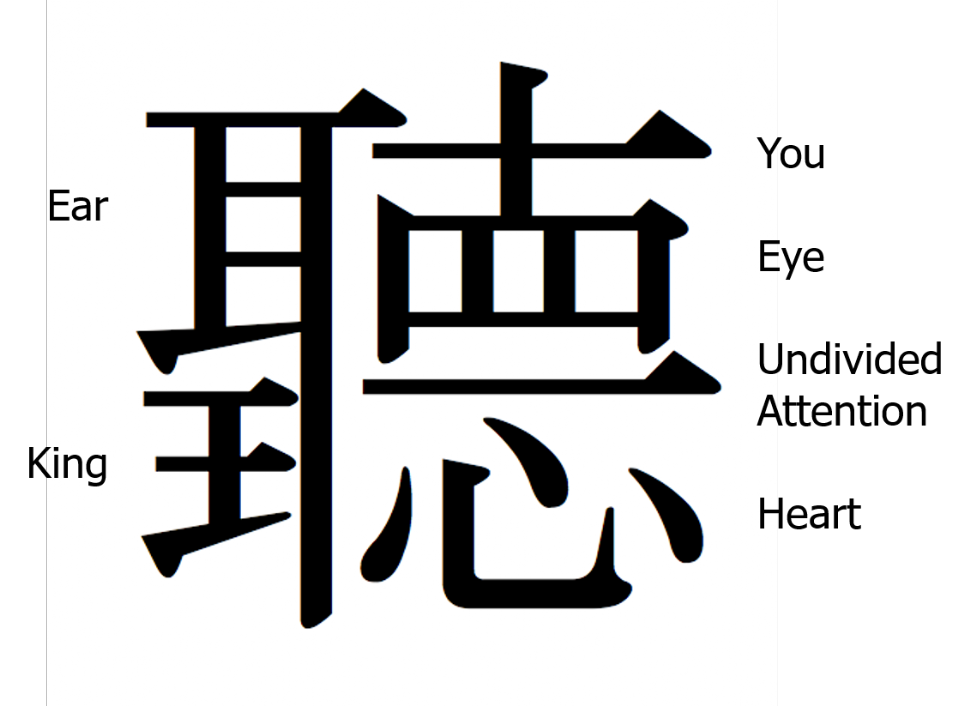Hearing vs. Listening
Articles

Listening and hearing are two different things. You may be hearing someone’s words but if you’re not willing to let these words influence your thinking, then you’re not really listening.
When we listen to someone talk, our default is paying more attention to the side-conversation (left-hand column) we have in our own mind. We internally filter what we hear, see, and feel during the exchange.
What counts for communication is more than what we hear. Tone, verbal cues, and emotions influence it. Although experts debunked the myth that 93% of communication is nonverbal, the amount of non-verbal influence is still significant.
The Japanese Kanji symbol for listening elegantly brings these dimensions together. The individual symbols that form the composite “to listen” include: Ear, King (Unity between Heaven, Man, and Earth), You, Eye, Undivided Attention, and Heart.

When you listen, give the person speaking cues that you’re with them. Do this passively by taking an open posture and maintaining eye contact, offering simple acknowledgments, and otherwise remaining silent. Another more engaging approach is active listening. When we actively listen, we are taking in what the speaker says, waiting for a natural break, and then reflecting what it is we’re hearing. To do this, repeat what you heard into your own summary. When you become highly effective, reflect the feelings behind what the other person is saying. It is not a wise idea to simply parrot back the exact words. After a speaker hears their exact words repeated back verbatim a couple of times, they often become annoyed. This was a favorite way to torment my six sisters when I was young.
My best advice for being attentive when someone is speaking is: listen and be willing to “try-on” the concepts they are presenting. This means:
- accepting what the speaker says, even if you disagree
- not interrupting; but do use active listening
- suspend judgment for now
- ask open ended questions to get more detail
- focus your full attention
The hard part is putting this advice into action. This is because you have your own internal conversation going on while you’re dealing with any emotional content in the communication. With practice and discipline, you will get good at it. Getting good involves making a conscious effort.
On the road to creating velocity through conversations for results, listening is the superhighway.
You can learn more on this topic in the new book, Conversations for Results: Accelerating Performance through Conversations, available on Amazon.com in paperback, Kindle and Audible formats.

